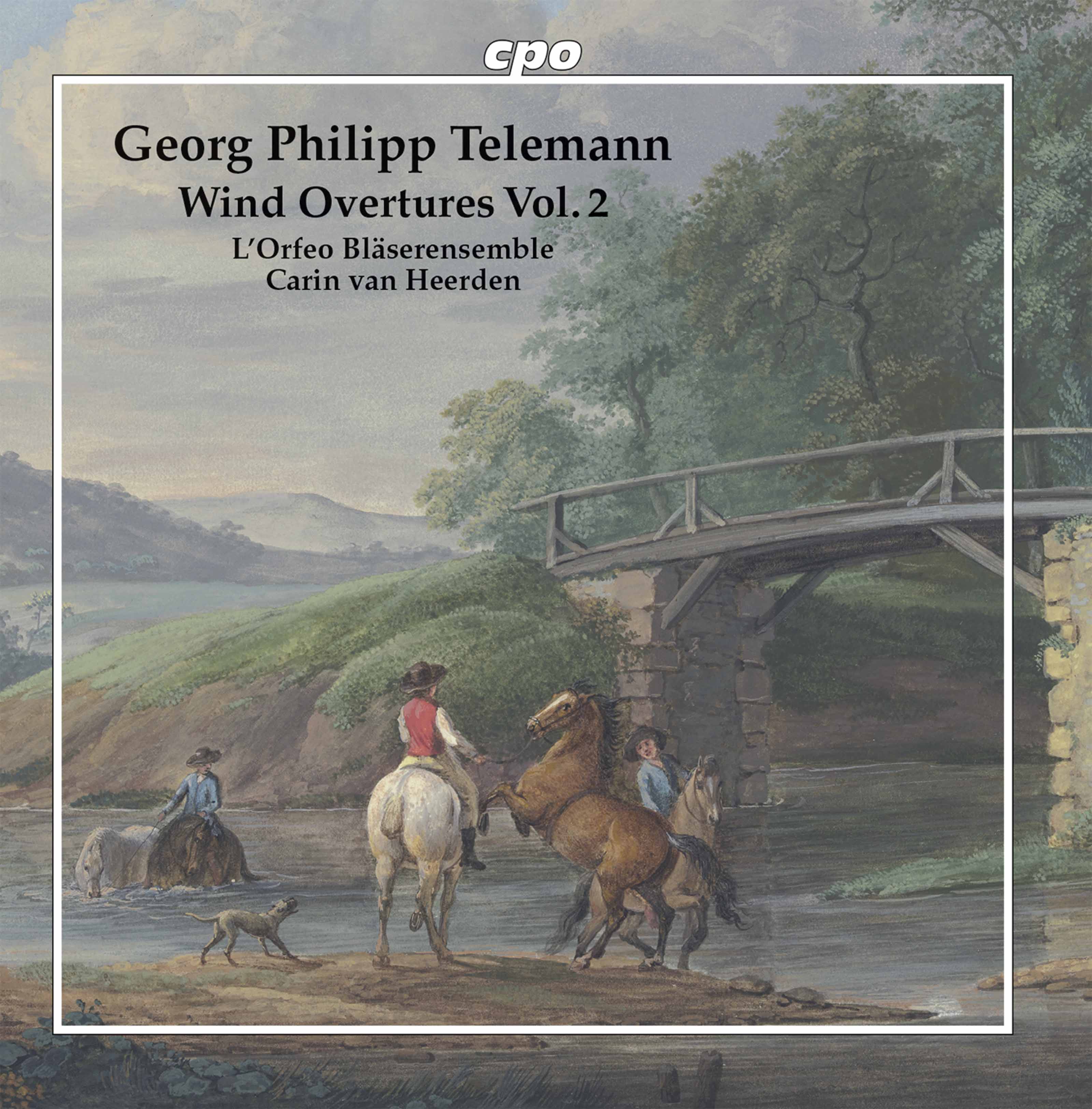Swans, Bells, and a River God: Telemann Wind Overtures
A wonderfully bracing album full of discoveries. The group L'Orfeo Bläserensemble, directed by oboist Carin van Heerden, plays with gusto throughout

The German label cpo's forays into the byways of the Barqoue have ielded a multitude of trasures: here's another, the second violume of Wind Overtures, taking us into the reals of so-called "Harmoniemusik" (a term associated with wind esnemble music for hunting, military ot "table" - dining - uses).
Arguably of greatest interest here is the so-called "Alster" Overture, the Overture in F-Major, TWV55:F11. It was intended for performance, scholarship has suggested, with a serenata that has sadly not survived. The instrumentation is distinctly more padded out than the first piece on the disc: think Handel's Water Music on a barge floating down the Thames as opposed to a lunchtime recital at the Wigmore Hall. Here we have four horns (sounding as outdoorsy as that Water Music I mentioned), two oboes (doubled) and bassoon (doubled). The larger oboe section really makes its mark almost squaring up to the horns in imitation as if in attempt to equal their heft (there's some splended high horm playing in the first movement (itself, confusingly, also called "Overture"):
Little could prepare one for the next movement, the positively outrageous, raucous "Die canonierende Pallas":
The Alster Ouverture is a portrait of Hamburg and its then-rural surroundings, threaded by the River Alster. Listen to the delightful fourth movement, "Die Hamburgische Glockenspiele," Telemann in most definitely playful mood (the bells in question are thsoe of the Hamburg churches of St Peter and St Nicholas):
Telemann even represents swans majestically gliding along the river in the Sarabande in "Der Schwanen-Gesang" (!):
After some "village music" comes the most stark example of Telemann's tone-painting abilities. It sounds a bit like Telemann's equiavlent of Mozart's "Musical Joke" (Ein musikalischer Spaß, K 522). Entitled "Die concertierenden Frösche und Kränen" (The Concert of Frogs and Crows) it is hilarious to this day. and the present players must have had a blast!
The river itself is celebrated in the movement entitled "Der frohlockende Peleus". Peleus is the river God, and the title means "Peleus exultant" (it's mislabeled on YouTube as "Der frohlockende Pan"):
.. and how that movement contrasts with the lullaby-like "Der ruhende Pan," when the God gets his moment of oboe-serenaded peace before a finale that once more takes us firmly outside . Believe it or not, this frenetic piece, "Der Schäfer und Nymphen Eilfertiger Abzug" (The hasty retreat of the nymphs and shepherds) is actually a fugue. Congratulations to L'Orfeo Bläserensemble for the sheer rapidity of articulation at times:
The score for this performance was prepared from the Dresden MS (manuscript) of this piece by Professor Doctor Manfred Fechner.
Finally, the Overture in F-Major, TWV 44:9, a relatively compact example (total eight minutes; the overture to the Alster-Ouverture was over nine!) with its "Overture" an abridged French Overture. The piece is, as one might expect, utter delight, No extra-muical associations here, just a whole load of fun. Here's the second movement Rondeau:
A wonderfully bracing album, full of discoveries. The group L'Orfeo Bläserensemble, directed by oboist Carin van Heerden, plays with gusto throughout.
